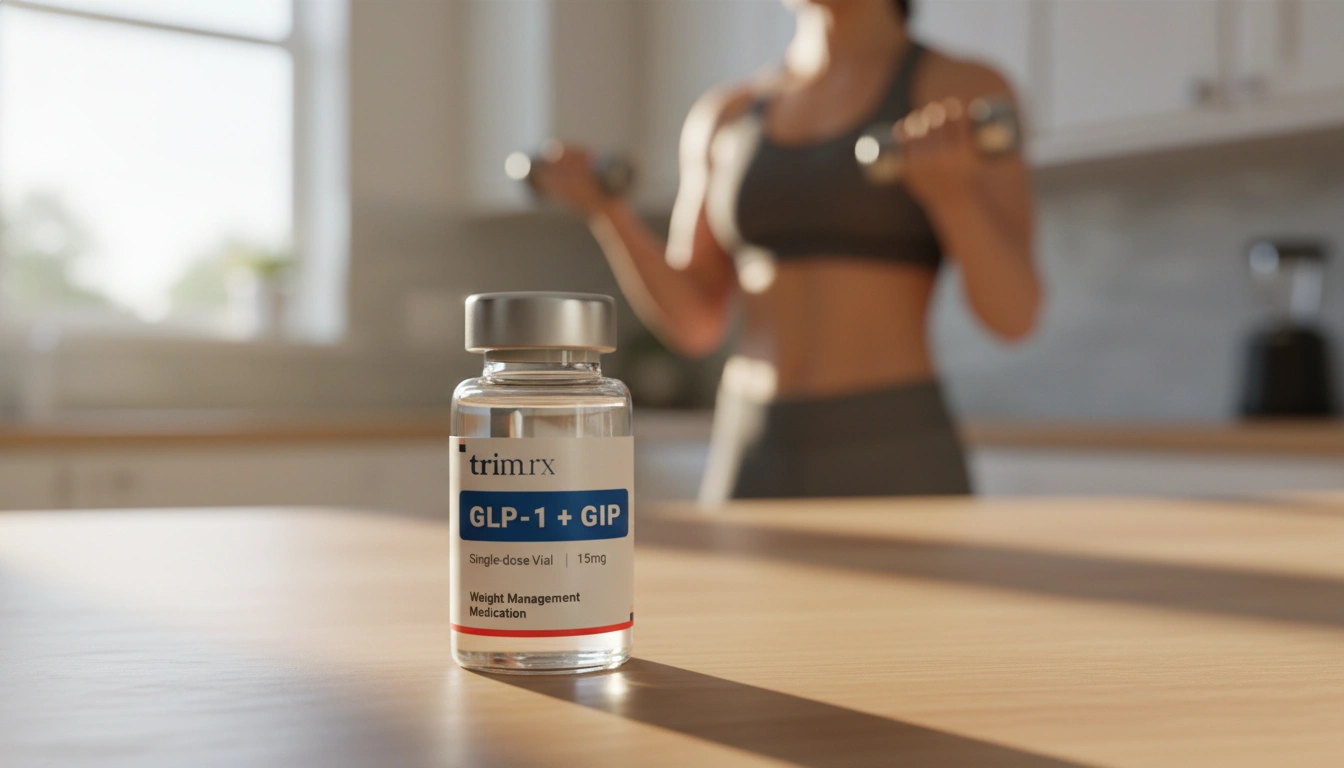Will GLP-1 Come Down in Price? An In-Depth Look at the Future of Weight Loss Medications

Introduction
Did you know that nearly half of adults taking GLP-1 medications report difficulty affording their prescriptions? This startling statistic underscores a critical issue in the realm of weight management and chronic disease treatment. As the demand for medications like Wegovy and Zepbound continues to grow, so does the urgency to address their affordability. These medications, renowned for their effectiveness in promoting weight loss and managing conditions like obesity and diabetes, are currently priced out of reach for many individuals, particularly those without insurance coverage.
Historically, the high cost of GLP-1 medications has posed significant barriers to access, making it difficult for many to benefit from their life-changing effects. However, recent developments in the pharmaceutical landscape hint at a potential shift in this paradigm. With drug makers like Novo Nordisk and Eli Lilly introducing lower-cost options and expanding their patient assistance programs, we are left to ponder the sustainability of these changes and whether they will lead to a more accessible future for GLP-1 medications.
In this post, we will delve into the current pricing landscape of GLP-1 medications, explore the factors driving their costs, and discuss the implications for patients seeking effective weight loss solutions. We will also highlight how TrimRx fits into this conversation by offering personalized, medically supervised care that prioritizes safety and effectiveness in weight loss journeys. By the end of this article, you will have a clearer understanding of the dynamics at play in the GLP-1 market and what it may mean for your health and well-being.
The conversation surrounding the affordability of GLP-1 medications, such as Wegovy and Zepbound, has intensified as patients and healthcare providers grapple with their high costs. As we navigate the complexities of these medications, one question looms large: will GLP-1 come down in price? This blog post aims to explore the factors influencing the pricing of these medications, the recent changes in the market, and what this means for current and future users.
Understanding GLP-1 Medications
What Are GLP-1 Medications?
GLP-1 (glucagon-like peptide-1) medications are a class of drugs that mimic the action of the natural hormone GLP-1 in the body. They primarily work by increasing feelings of fullness, slowing gastric emptying, and reducing appetite, making them effective tools for weight management. Commonly prescribed GLP-1 medications include:
- Wegovy (semaglutide): Approved for chronic weight management in adults, Wegovy has garnered attention for its impressive weight loss results, with some patients experiencing up to 15-20% reduction in body weight.
- Zepbound (tirzepatide): This newer entrant has shown promise in clinical trials for both weight loss and glycemic control, making it another valuable option for individuals struggling with obesity and related conditions.
- Ozempic (semaglutide): While primarily used for managing type 2 diabetes, Ozempic is also employed off-label for weight loss, highlighting the versatility of GLP-1 medications.
- Mounjaro (tirzepatide): Similar to Zepbound, Mounjaro is designed to improve glycemic control and promote weight loss, offering additional options for patients.
The Role of GLP-1 Medications in Weight Management
Weight management is a complex process influenced by numerous factors, including genetics, lifestyle choices, and environmental conditions. For many individuals, traditional weight loss methods such as diet and exercise may not yield the desired results. This is where GLP-1 medications come into play, providing an additional layer of support for those seeking to achieve and maintain a healthier weight.
Despite their effectiveness, the high cost of GLP-1 medications has raised questions about their accessibility and affordability. As we explore the current trends in pricing, it is essential to consider the broader implications for both patients and healthcare providers.
The Current Pricing Landscape
Understanding the Costs
As of now, the list prices for GLP-1 medications can exceed $1,000 per month, creating significant financial barriers for many potential users. According to recent surveys, approximately half of adults taking these medications report difficulties affording them, raising serious concerns about equitable access to these crucial treatment options.
In response to mounting pressure from both the public and policymakers, drug manufacturers have begun to introduce lower-cost alternatives. For example, in March 2025, Novo Nordisk announced a 23% price reduction for Wegovy, bringing the cash price down from $650 to $499 for uninsured patients. Eli Lilly followed suit with similar reductions for Zepbound, highlighting a shift in the industry aimed at improving affordability for patients.
Factors Influencing Pricing
Several factors contribute to the pricing dynamics of GLP-1 medications, including:
- Competition and Market Forces: The entry of new GLP-1 medications into the market has intensified competition, prompting manufacturers to reconsider their pricing strategies. As more options become available, patients may benefit from increased affordability.
- Insurance Coverage Expansion: The expanded approval of GLP-1 medications for conditions beyond obesity and diabetes—such as heart disease risk and obstructive sleep apnea—has led to more insurers considering coverage for these drugs. Improved insurance coverage can significantly reduce out-of-pocket costs for patients.
- Regulatory Developments: The approval of generic versions of older GLP-1 medications, such as liraglutide, is expected to create additional competition, potentially driving prices down further over time.
- Patient Assistance Programs: Pharmaceutical companies are increasingly offering patient assistance programs to help eligible individuals access medications at reduced costs. These programs can provide a critical lifeline for those struggling to afford their prescriptions.
The Future of GLP-1 Pricing
Expectations for Price Reductions
While recent price reductions for GLP-1 medications are encouraging, experts caution that prices may not drop dramatically in the near future. The complexities of pharmaceutical pricing, including the costs associated with research and development, manufacturing, and marketing, mean that significant reductions may take time. Additionally, the market is closely monitored by regulatory bodies and may face challenges in achieving widespread affordability.
However, there is optimism among healthcare professionals and patients alike that ongoing developments in the market could pave the way for greater accessibility. As competition increases and more medications enter the fray, we may see continued pressure on manufacturers to lower prices.
The Role of TrimRx
At TrimRx, we believe in fostering an environment where individuals can access safe, effective, and personalized weight loss solutions. Our commitment to individualized care means that we work closely with patients to develop tailored treatment plans that prioritize their unique needs and circumstances. By integrating advanced medical science with compassionate care, we strive to make sustainable weight loss attainable for everyone.
As part of our comprehensive service, we offer a free assessment quiz to help determine eligibility for our prescription weight loss medications. This collaborative approach empowers patients to take charge of their health while ensuring they receive the support they need throughout their weight loss journey.
Conclusion: A Path Forward
The conversation surrounding the affordability of GLP-1 medications is both timely and critical as we navigate the complexities of weight management in today’s world. While the current pricing landscape poses challenges for many, recent developments hint at a brighter future. With increased competition, improved insurance coverage, and the introduction of lower-cost options, there is hope that GLP-1 medications will become more accessible to those who need them most.
At TrimRx, we are dedicated to offering personalized, medically supervised weight loss solutions that prioritize safety, effectiveness, and empathy. We invite you to take our free assessment quiz to explore whether our prescription weight loss medications, including GLP-1 options, may be right for you. Together, we can embark on a journey toward better health and well-being.
FAQ
What are GLP-1 medications used for?
GLP-1 medications are primarily used for weight management and to improve glycemic control in individuals with type 2 diabetes. They work by mimicking the hormone GLP-1, which helps regulate appetite and food intake.
How much do GLP-1 medications typically cost?
The list prices for GLP-1 medications can exceed $1,000 per month. However, recent price reductions and patient assistance programs have begun to improve accessibility for some patients.
Will prices for GLP-1 medications continue to drop?
While recent reductions are encouraging, experts suggest that prices may not drop significantly in the near term. However, increased competition and regulatory changes may contribute to greater affordability in the future.
How can I access GLP-1 medications?
TrimRx offers a free assessment quiz to determine eligibility for prescription weight loss medications, including GLP-1 options. Our personalized approach ensures you receive the support you need throughout your weight loss journey.
What should I consider before starting GLP-1 medications?
It is essential to consult with a healthcare professional to discuss your individual health needs, potential side effects, and the best treatment options for your weight loss journey.

Transforming Lives, One Step at a Time
Keep reading
7 Tips for Sticking to GLP-1 Injection Schedules
Seven practical strategies to keep weekly GLP‑1 injections on schedule—pick a routine day, set reminders, manage side effects, rotate sites, and avoid missed doses.
Custom GLP-1 Dosing for Kidney Disease
Personalized GLP-1 dosing for CKD patients with monitoring, dehydration and hypoglycemia risk mitigation, and guidance across all kidney disease stages.
Semaglutide vs Tirzepatide: Approved Uses
Two leading diabetes and weight-loss drugs differ in FDA-approved benefits — one adds heart, kidney and liver protection; the other treats obstructive sleep apnea.



